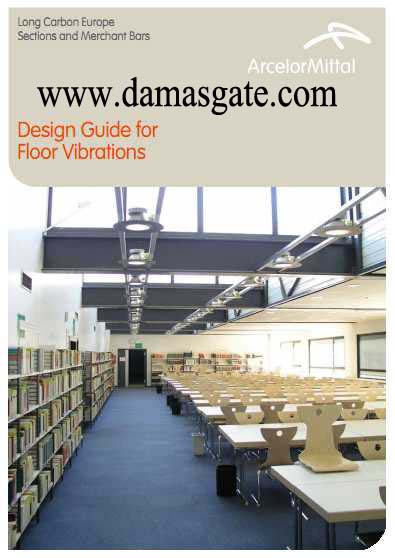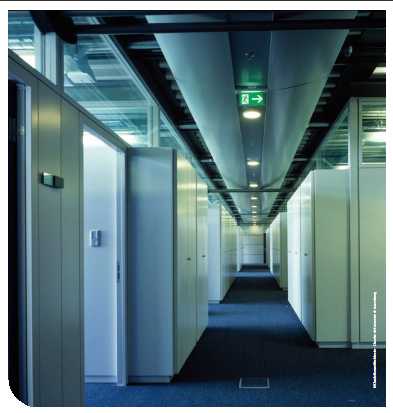Design Guide for Floor Vibration


This design guide presents a method for assessing floor vibrations guaranteeing the comfort of occupants. This document is based on recent research developments (RFCS-Project “Vibration of floors”).
Guidance for the structural integrity, given in this document, is based on common approaches.
Contents
1. Introduction 2. Definitions 3. Determination of Floor Characteristics 4. Classification of Vibrations 5. Design Procedure and Diagrams
Annex A Formulas for Manual Calculation Annex B Examples Technical assistance & Finishing References Your partners
Floor structures are designed for ultimate limit state and serviceability limit state criteria:
l Ultimate limit states are those related to strength and stability;
l Serviceability limit states are mainly related to vibrations and hence are governed by stiffness, masses, damping and the excitation mechanisms.
For slender floor structures, as made in steel or composite construction, serviceability criteria govern the design.
Guidance is given for:
l Specification of tolerable vibration by the introduction of acceptance classes (Chapter 4) and
l Prediction of floor response due to human induced vibration with respect to the intended use of the building (Chapter 5).
An overview of the general design procedure presented in Chapter 5 is given in Figure 1.
For the prediction of vibration, several dynamic floor characteristics need to be determined. These characteristics and simplified methods for their determination are briefly described. Design examples are given in Annex B of this design guide.
The design guide comprehends simple methods, design tools and recommendations for the acceptance of vibration of floors which are caused by people during normal use. The given design methods focus on the prediction of vibration. Measurements performed after erection may lead to differences to the predicted values so that one cannot claim on the predicted result.
The design and assessment methods for floor vibrations are related to human induced resonant vibrations, mainly caused by walking under normal conditions. Machine induced vibrations or vibrations due to traffic etc. are not covered by this design guide.
The design guide should not be applied to pedestrian bridges or other structures, which do not have a structural characteristic or a characteristic of use comparable to floors in buildings.
Download
*